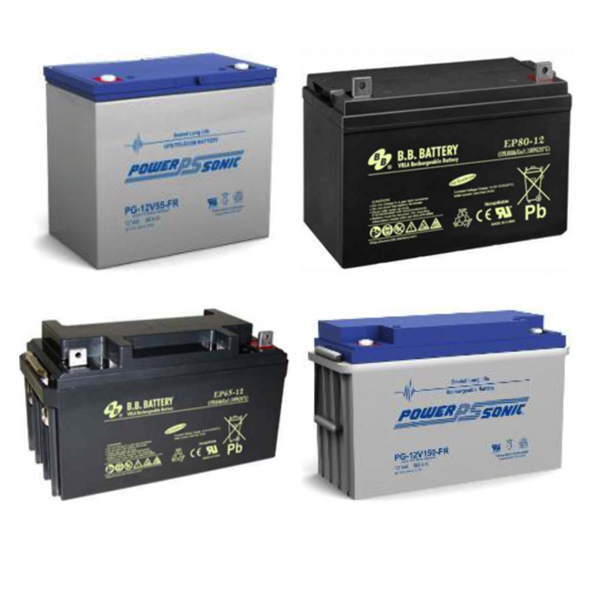
Solar Batteries

Batteries are immensely important parts of solar power systems. They allow for the storage of excess electricity generated by solar panels, which can then be used when the sun is not shining or when there is some other kind of electrical outage. They are what allow solar energy systems to be truly effective in providing a majority of the energy for a residence or business, as opposed to just a few periods scattered throughout the day. Now, there are a few different types of batters you can use for this, but the most common are still lead-acid batteries. They have a few advantages (mostly price-related) that keep them around, but they also have some major disadvantages regarding lifespan and efficiency.
When choosing a solar battery, the "depth of discharge" is a critical specification. This is a measure of how much of the battery's capacity can be used up without significantly impacting its lifespan. The depth of discharge varies with battery technology and determines the usable capacity, which is highly relevant for solar batteries, given the context of solar power systems, which are often off-grid or installed in remote locations.
Products
More Information about Solar Batteries
Solar batteries help lower energy costs and make it possible to employ "wasted" solar energy in an effective and sustainable way. They are key components of almost any off-grid solar system, and they also play a crucial role in grid-tied solar setups in areas where power outages are common. When sized properly and paired with a solar panel system, a solar battery can catch all the excess electricity produced during the daytime and use it effectively in the evening and early morning when the sun isn't shining and the panels aren't producing power. And whether you're using a solar setup for residential or commercial purposes, the right solar battery can ensure that those few cloudy days don't leave you relying on the utility grid for all your power needs.
FAQs
Are lithium ion batteries a good choice as a solar battery for backup power in a solar battery system?
Yes, lithium-ion batteries are a good choice for backup power in a solar battery storage system due to their high energy density, long cycle life, fast charging capabilities, and low maintenance requirements.
Do most solar batteries in renewable energy systems save money on energy bills?
Yes, most solar batteries in renewable energy systems save money on energy bills by storing excess electricity for use during peak hours or outages, reducing reliance on the grid.
How Solar Power Works in Industrial Settings
A basic solar setup includes:
Solar panels
The solar panel is going to absorb sunlight and convert that sunlight into energy.
Charge controllers
The charge controller is going to direct the energy that's absorbed by the solar panel to specific locations.
Batteries
A battery stores energy that is absorbed by the solar panel when it is not being used by the electrical load.
Inverters
An inverter takes DC power and converts it to AC power for use in homes or businesses.
The solar panel is absorbs sunlight and converts that sunlight into energy, in this case, DC power. That energy is going to be transferred over to the charge controller, which dictates where that energy actually goes. The charge controller is going to be wired to both the battery and it's also going to be wired to an electrical load. The charge controller will monitor the energy that is coming off of the solar panel and determine where that power is needed. For instance, if power is needed for an electrical load, it will send power in that direction. If there's no power that's needed for that electrical load, it will send power to the battery to store for later use. In the case where there is no need for power at the electrical load and the battery is full, the charge controller will dissipate that energy in the form of heat. In other applications, an inverter may be used in a solar setup. The inverter works by drawing energy, DC power, from the solar panel. It converts that energy into AC power, which can then be used in homes and businesses.

